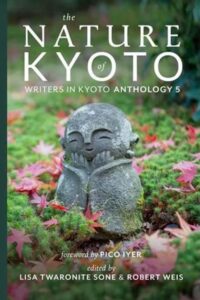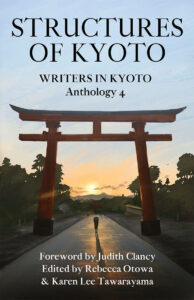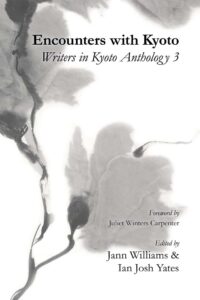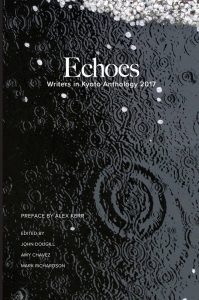A Writers in Kyoto Interview with Michael Greco. Could you tell us briefly about how you came to Kyoto? I’m the only person I know who actually came to Japan by boat, landing in 1983 after living several months in Russia, then the Soviet Union. My major at UC Irvine, near Los Angeles, was Russian, …Read More
Author: John Dougill (Page 20 of 45)
Running is not an activity you associate with my family. So says my brother Rod. This is true in recent decades. Vigorous exercise has not been our forte. That changed when I was lured to join the regular circuit runners around Nijojo (Nijo Castle) in Kyoto. A 2 km circuit that encircles the castle, its …Read More
Hello fellow WiK members, and a very happy, hot and humid holiday season to you all. I’m not sure about your good selves, but at this time of the year, in Kyoto especially, I find it hard to generate enough energy or even enthusiasm for anything, including lengthy pieces of writing. It is at this …Read More
Although Kanazawa is recognized by UNESCO as a “City of Crafts and Traditional Arts,” it has also produced many great writers over the years, and, adding to this its impressive literary halls, museums, memorials, statues, celebrations, and even occasional author-themed foods, could well be considered a “City of Literature,” too. Izumi Kyoka is Kanazawa’s most …Read More
A book review by John Dougill Most Kyoto residents will be familiar with The Lady and the Monk, published in 1991, in which a foreigner in search of Zen finds unexpected love. Many may have finished the book wondering what happened to the couple. Reader, they married. Now, nearly thirty years later, we are presented …Read More
While Writers in Kyoto is dedicated to local writers publishing in English, the following may be interesting to anybody who writes in Japanese: The First Kyoto Literature Award invites writers from all over the world to submit a complete, full-length novel in Japanese on the theme of “Kyoto”. There are three categories, “General”, “Students”, and …Read More
A book review by John Dougill. Stone gardens are an art form in themselves, different from other garden types and with distinctive features. As Stephen Mansfield shows in the early chapters of his book, the stone garden drew on diverse origins – animist use of sacred rocks and space; Chinese idealisations of nature; the Japanese …Read More
Forsaking the farce of form and faceArtists forced to raze the dominant paradigmSeizing the sense of silence and space The painter replicates without a traceFleeing frigid hue and spectral climeForsaking the farce of form and face The poet shuns a language of sonorous laceRefuses circumscription to rhythm and rhymeSeizing the sense of silence and space …Read More
Dougal McLeish had been staring out of his office window for a full hour, the yellowing light of an early autumnal evening creeping slowly across the cluttered desktop in front of him. Hands folded in his lap, shoulders sagging forward, his demeanour bore all the hallmarks of the dejected. Yet, there was no sadness in …Read More
When is Ryōan-ji not Ryōan-ji? At what point does representation become abstraction, or does one thing morph into something totally different? John Cage loved stones, and collected them from all over the world. He also loved Ryōan-ji from the moment he saw it during his first trip to Japan in 1962. In 1983 Cage began …Read More






Recent Comments